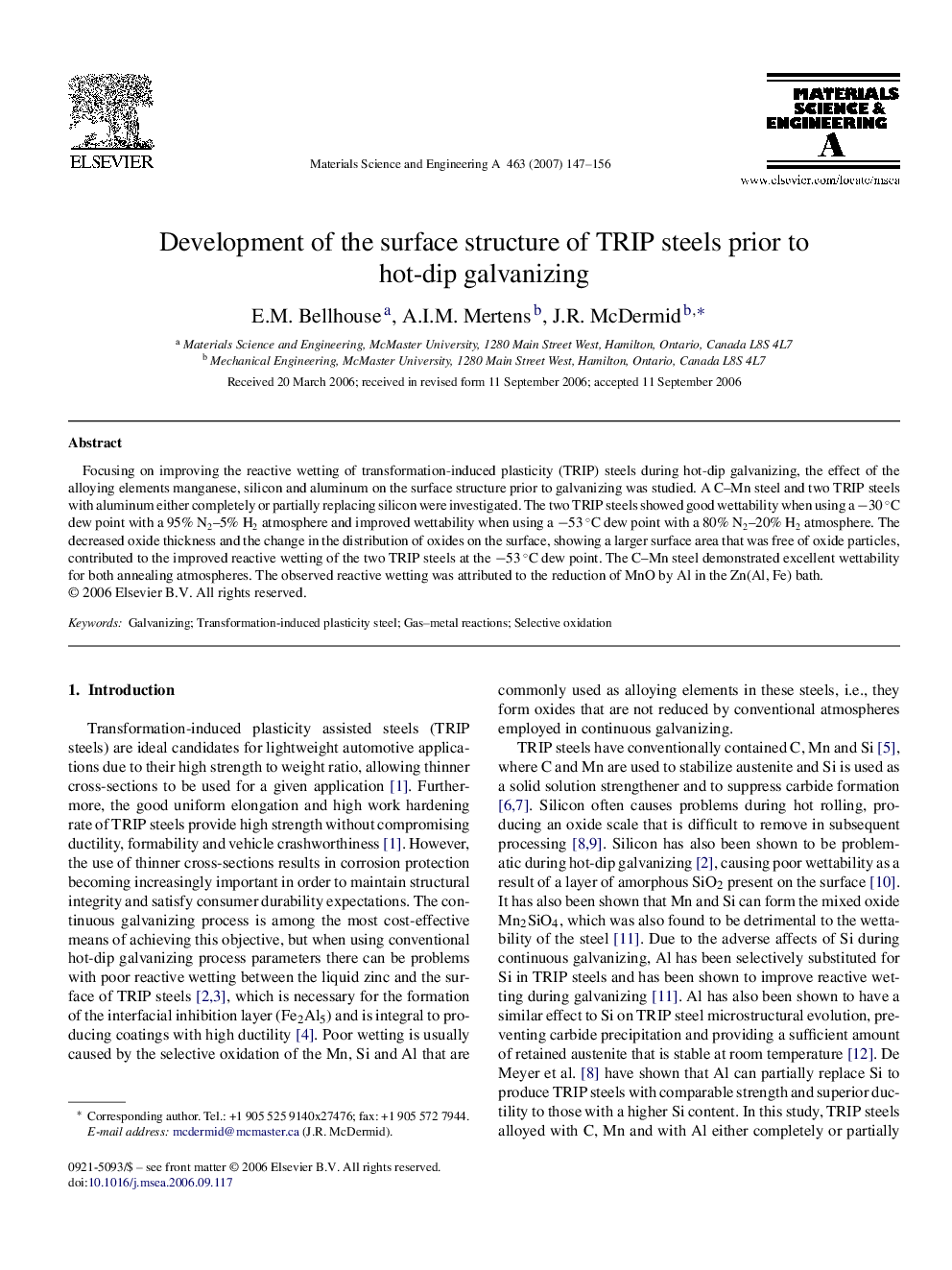| Article ID | Journal | Published Year | Pages | File Type |
|---|---|---|---|---|
| 1583752 | Materials Science and Engineering: A | 2007 | 10 Pages |
Focusing on improving the reactive wetting of transformation-induced plasticity (TRIP) steels during hot-dip galvanizing, the effect of the alloying elements manganese, silicon and aluminum on the surface structure prior to galvanizing was studied. A C–Mn steel and two TRIP steels with aluminum either completely or partially replacing silicon were investigated. The two TRIP steels showed good wettability when using a −30 °C dew point with a 95% N2–5% H2 atmosphere and improved wettability when using a −53 °C dew point with a 80% N2–20% H2 atmosphere. The decreased oxide thickness and the change in the distribution of oxides on the surface, showing a larger surface area that was free of oxide particles, contributed to the improved reactive wetting of the two TRIP steels at the −53 °C dew point. The C–Mn steel demonstrated excellent wettability for both annealing atmospheres. The observed reactive wetting was attributed to the reduction of MnO by Al in the Zn(Al, Fe) bath.
